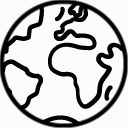

South Africa’s Drakensberg grasslands are home to more than 2,500 species of plants and endangered birds such as the wattled crane. Fresh water from this area provides crucial clean drinking water for millions of people. It’s also an important landscape for sheep farming. But this landscape and its health as an important freshwater catchment area is under threat due to human activity. In 2021, WWF and H&M Group started a regenerative wool production partnership project in this landscape.
Wool has the potential to be a long-lasting and low footprint material in fashion, but that depends on how farmers produce the wool and manage their land and river systems thereon. The Eastern Cape Drakensberg is one of the eco-regions in the country where wool production has a particularly significant impact in a critically endangered biome. Addressing the threats that overgrazing, invasive species and poor land management pose to the Eastern Cape Drakensberg grasslands is an overlapping priority for H&M Group and WWF.
The partnership project has the vision that regenerative sheep farming in the South African Grasslands biome can contribute to biodiversity protection and enhancement as well as social development in this critical landscape. It will contribute to securing the Eastern Cape Drakensberg strategic water source area, protecting biodiversity corridors, and to the viability of the new Grasslands National Park in South Africa. This will be done by working with both commercial and communal sheep farmers to achieve resource-efficient, climate resilient agriculture and regenerative livestock grazing. It includes restoring natural habitats and clearing invasive plants from river systems, so we can unlock more sustainable wool and improve the resilience of wetlands, springs and rivers.
Why must we invest in this strategic water source area?
The grasslands are critical biomes for biodiversity globally and particularly in South Africa, providing habitats for nearly half of the country’s 34 endemic mammals, but the landscape is under threat and only approximately 3% of the land area is formally protected. The grasslands provide habitats for 10 of the 14 globally threatened bird species found in South Africa, a third of the 107 threatened butterfly species in South Africa and more than 2,500 plant species live in these habitats. Within the Eastern Cape Drakensberg area threats to the grasslands include overgrazing by cattle and sheep, poor rangeland and fire management, invasive plants and land clearance for crops.
Water-thirsty invasive plant species, erosion of river banks and sediment run-off will have negative impacts on water yield and biodiversity without more conscious management. The Eastern Cape Drakensberg grasslands have also been identified as a strategic conservation priority area by WWF South Africa due to its significance for biodiversity and as a strategic water source area. The red area in figure 1 illustrates the full extent of the Grasslands National Park target area in the context of the grasslands biome and strategic water source areas. The regenerative wool project will focus geographically on sheep farmers on the western edge of this red area.
 Figure 1:Map of the proposed National Grassland Park within the Grassland biome
Figure 1:Map of the proposed National Grassland Park within the Grassland biome
Degradation of river systems and natural water supplies has direct impacts on the resilience of farms to droughts, contributes to the pressures that lead to overgrazing and directly impacts freshwater and riparian biodiversity. Because invasive plants tend to form dense stands where very little else can survive, they can have a devastating impact on local biodiversity and are one of the largest causes of biodiversity loss worldwide. Therefore, clearing invasive species like black wattle known to consume large amounts of water compared to indigenous plants, creates an opportunity to restore land to its natural state, to restore river systems and the ecosystems services they provide, to build climate resilience and to enhance the natural habitats of endemic species.
Looking ahead
This initiative provides an exciting opportunity to demonstrate how conservation organizations and corporate partners can collaborate to deliver positive outcomes for biodiversity and water stewardship through work with large and small–scale farmers on regenerative production. Work in this landscape is important in its own right, but will also help inform further efforts by H&M Group and WWF to improve the wool industry at scale.
Together we can contribute to reversing biodiversity loss and building a water secure future.
